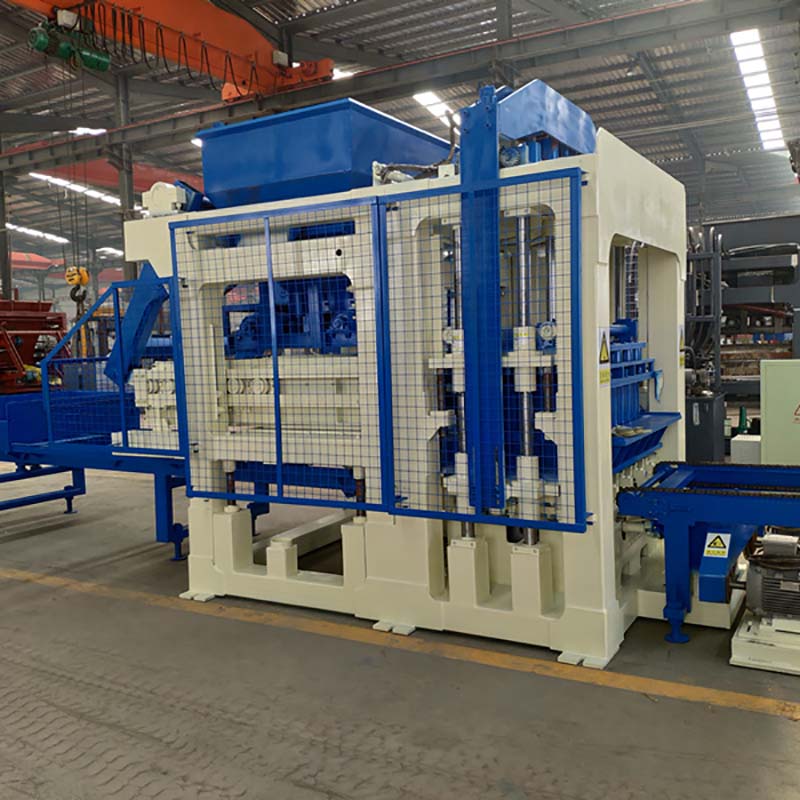
Image source:Aiwei block machine
Introduction
Investing in brick making machines is a strategic decision that can significantly impact a business’s efficiency, productivity, and profitability. However, the cost of these machines goes beyond the initial purchase price. To make informed decisions, manufacturers and entrepreneurs must consider the total cost of ownership (TCO) associated with brick making machines. TCO encompasses not only the purchase price but also operational, maintenance, and other costs incurred throughout the machine’s lifecycle. This article provides a comprehensive understanding of TCO for brick making machines and how considering TCO can lead to smarter investment decisions.
I. The Components of Total Cost of Ownership (TCO)
When assessing the TCO of brick making machines, it’s essential to break down the costs into various components:
- Initial Purchase Price: This is the upfront cost of acquiring the brick making machine. It includes the base cost of the machine, optional features, and any associated taxes or fees.
- Installation Costs: Expenses related to the setup and installation of the machine, including transportation, site preparation, and any modifications needed to accommodate the equipment.
- Operating Costs: These ongoing costs include labor, raw materials, energy consumption, and any other expenses directly related to the day-to-day operation of the machine.
- Maintenance and Repairs: Regular maintenance is essential to ensure the machine functions optimally. This category includes the cost of routine maintenance, spare parts, and unexpected repairs.
- Training and Skill Development: Training operators and maintenance staff to use and maintain the machine effectively is an often-overlooked cost.
- Downtime Costs: Unplanned downtime can result in lost production, missed deadlines, and potential revenue loss. Downtime costs should be factored into the TCO calculation.
- Resale or Salvage Value: Consider the potential resale or salvage value of the machine at the end of its useful life.
- Financing Costs: If the machine is financed through loans or leases, include interest payments and financing charges in the TCO analysis.
II. Determining the Useful Life
One crucial factor in calculating TCO is estimating the useful life of the brick making machine. This can vary significantly depending on factors such as the machine’s quality, maintenance, and technological advancements in the industry. A longer useful life generally leads to a lower TCO.
III. The Importance of Efficiency and Quality
Efficiency and product quality play a vital role in TCO. More efficient machines consume fewer raw materials and energy, reducing operational costs. Additionally, machines that consistently produce high-quality bricks result in fewer rejects and waste, further lowering TCO.
IV. TCO Calculation Methods
Calculating TCO for brick making machines involves summing up the various costs mentioned earlier over the machine’s estimated useful life. Several methods can be employed:
- Simple TCO Calculation: This involves adding up all the costs over the machine’s life, both initial and ongoing, and subtracting any salvage or resale value.
- Net Present Value (NPV): NPV accounts for the time value of money, discounting future costs and benefits to present value. It provides a more accurate picture of the true economic impact of the investment.
- Payback Period: This method determines how long it takes to recoup the initial investment through cost savings or revenue generation. A shorter payback period indicates a more favorable investment.
V. Benefits of TCO Analysis
Understanding and considering TCO when evaluating brick making machines offer several benefits:
- Informed Investment Decisions: TCO provides a holistic view of the costs associated with a machine, helping businesses make well-informed decisions based on long-term financial implications.
- Cost Optimization: By identifying cost drivers, businesses can take steps to optimize operational efficiency, reduce downtime, and minimize overall costs.
- Budgeting and Planning: Accurate TCO analysis aids in budgeting for all costs associated with the machine, including maintenance and repairs.
- Risk Management: TCO analysis helps identify potential risks and uncertainties in the investment, allowing businesses to plan for contingencies.
- Competitive Advantage: Making informed decisions about machine investments can result in more competitive pricing, higher-quality products, and better customer satisfaction.
VI. Conclusion
When investing in brick making machines, considering the total cost of ownership is essential for making financially prudent decisions. By accounting for all costs associated with the machine, both upfront and ongoing, businesses can optimize their operations, improve efficiency, and enhance their competitive edge. TCO analysis empowers manufacturers and entrepreneurs to make investments that align with their long-term goals and financial sustainability, ultimately driving success in the brick production industry.
